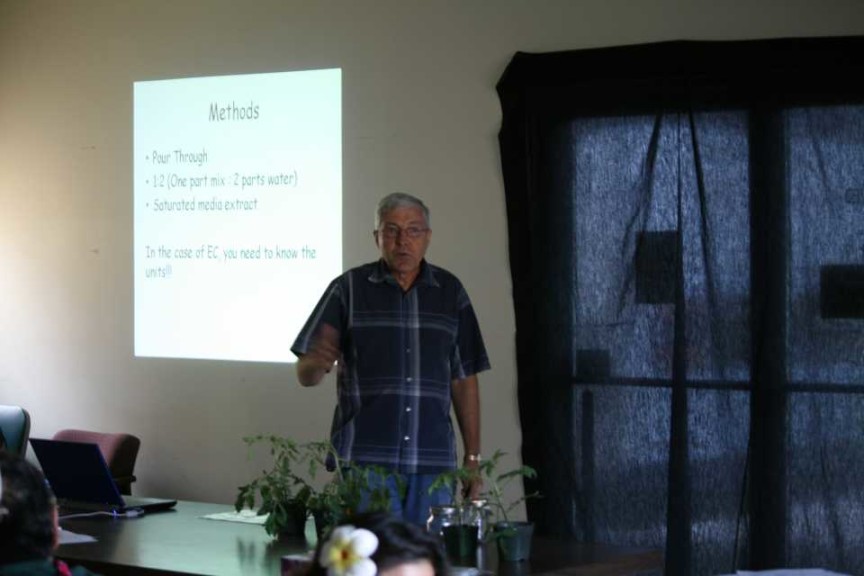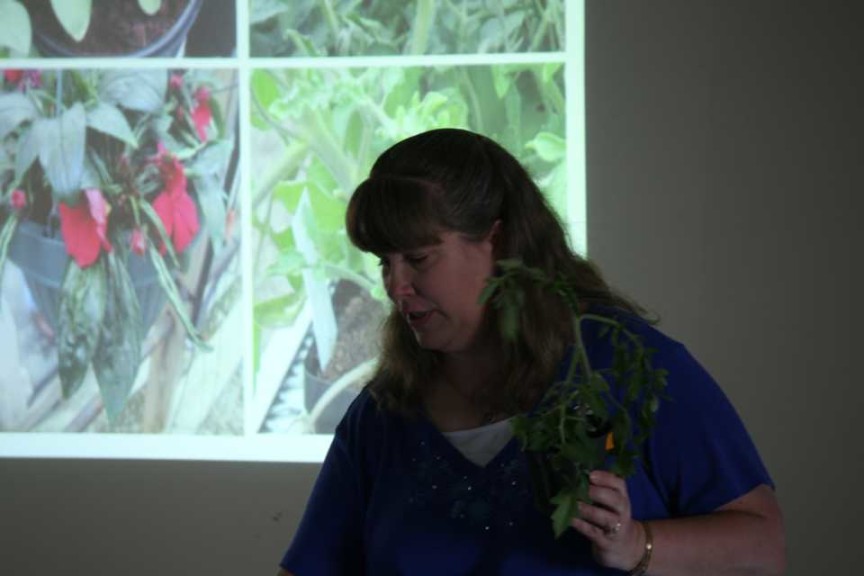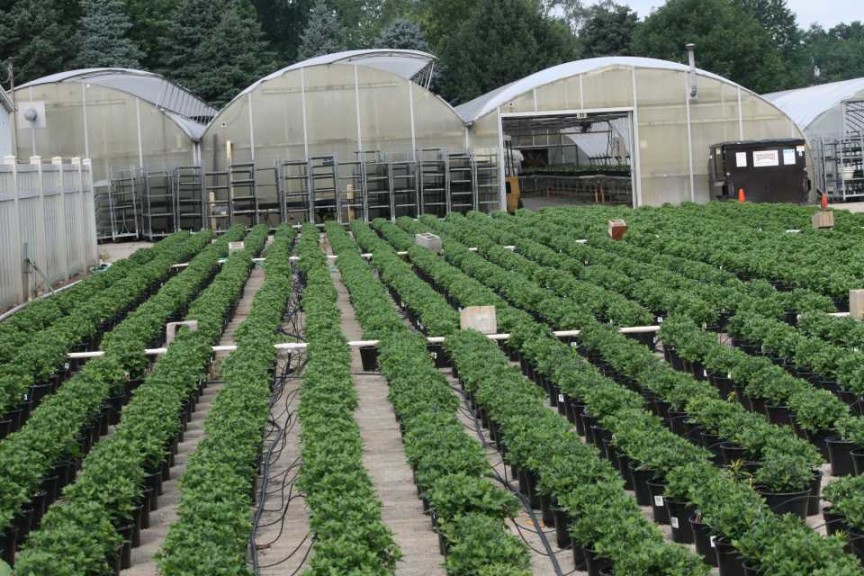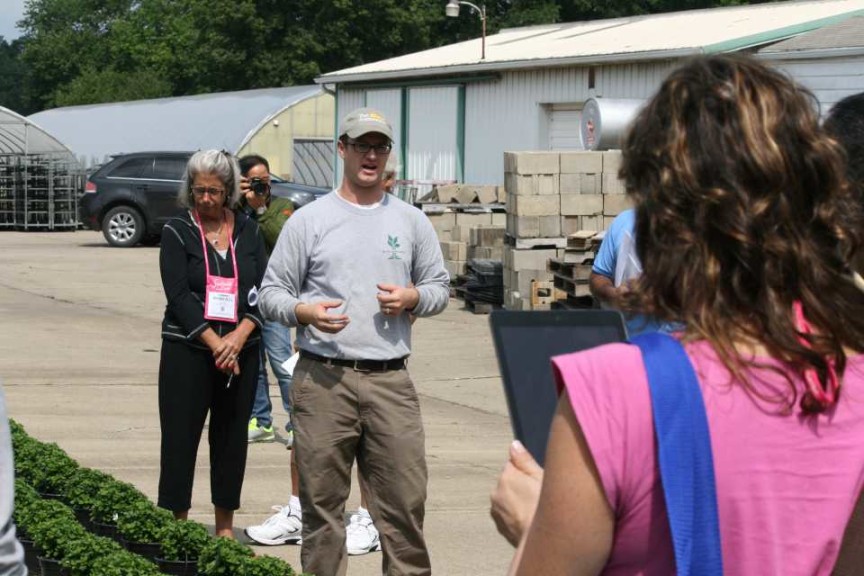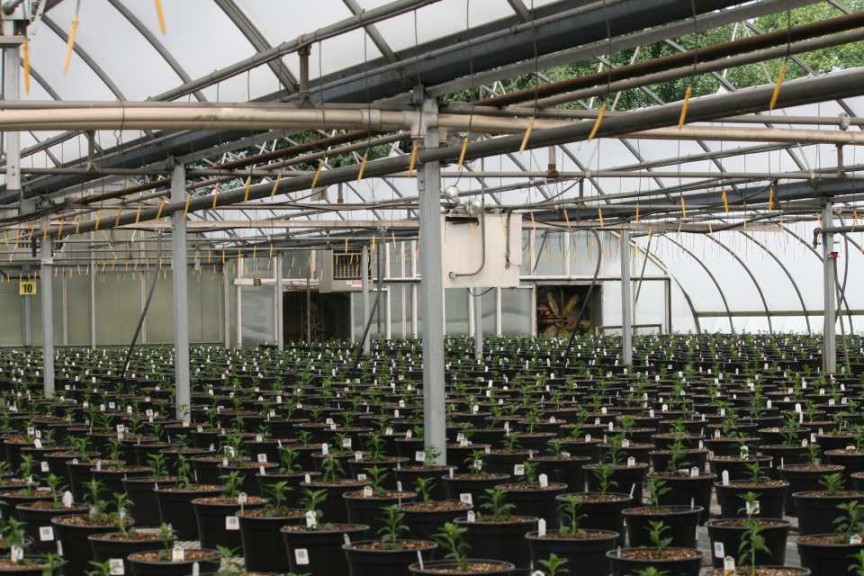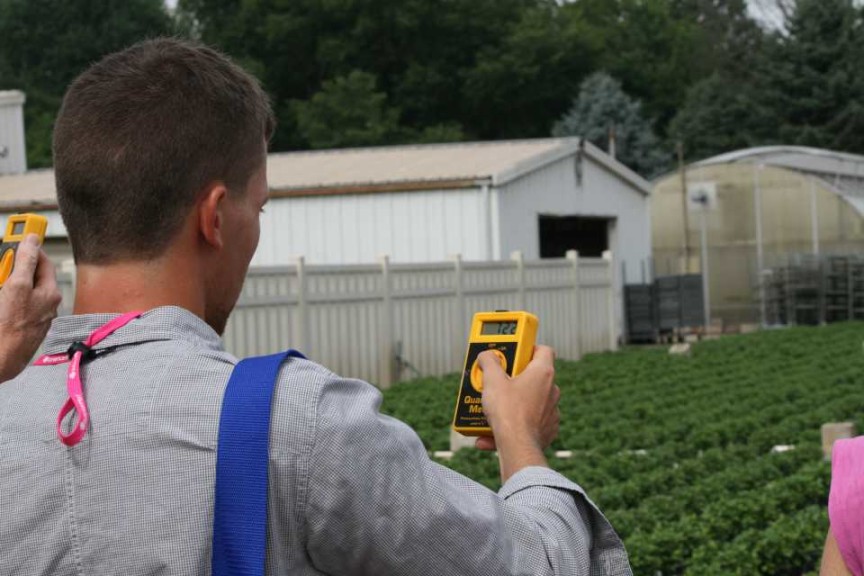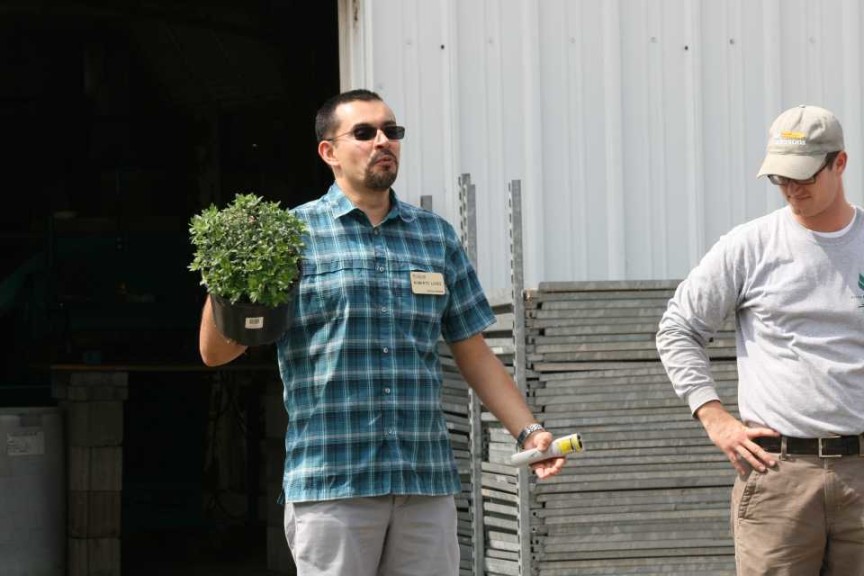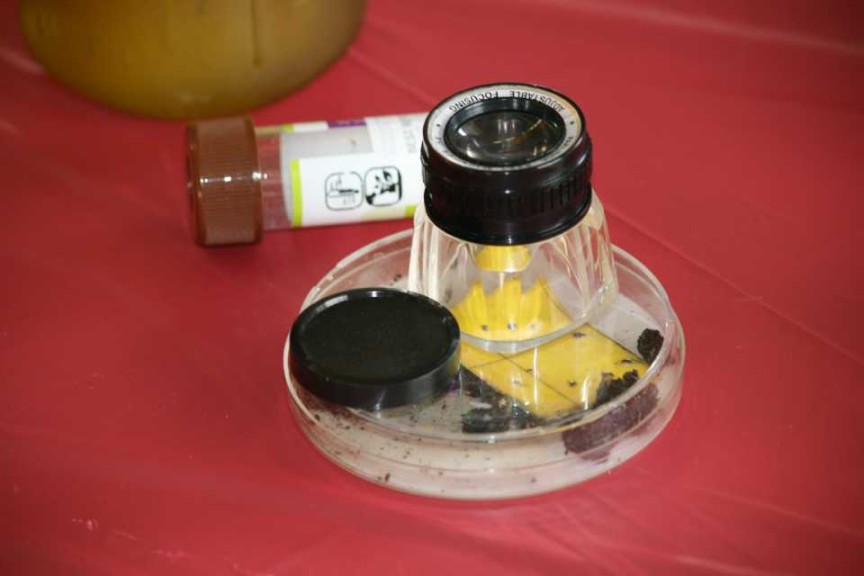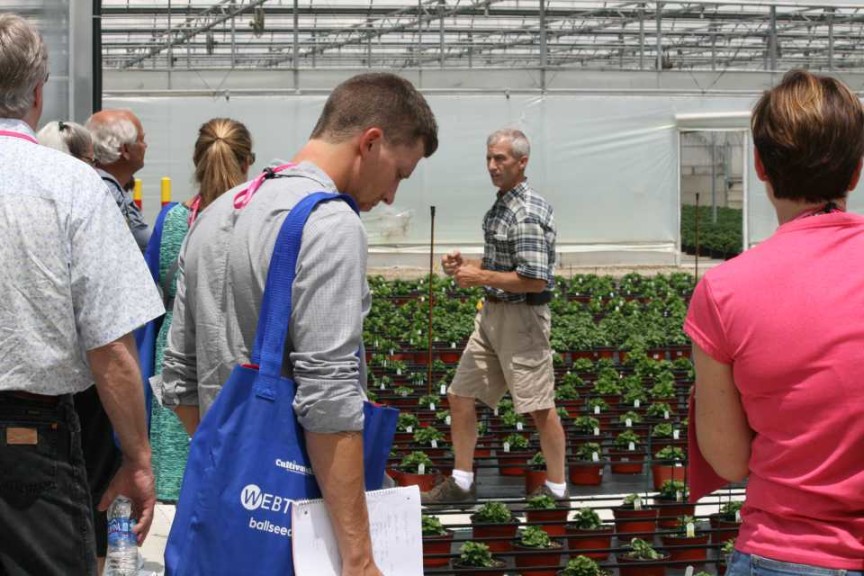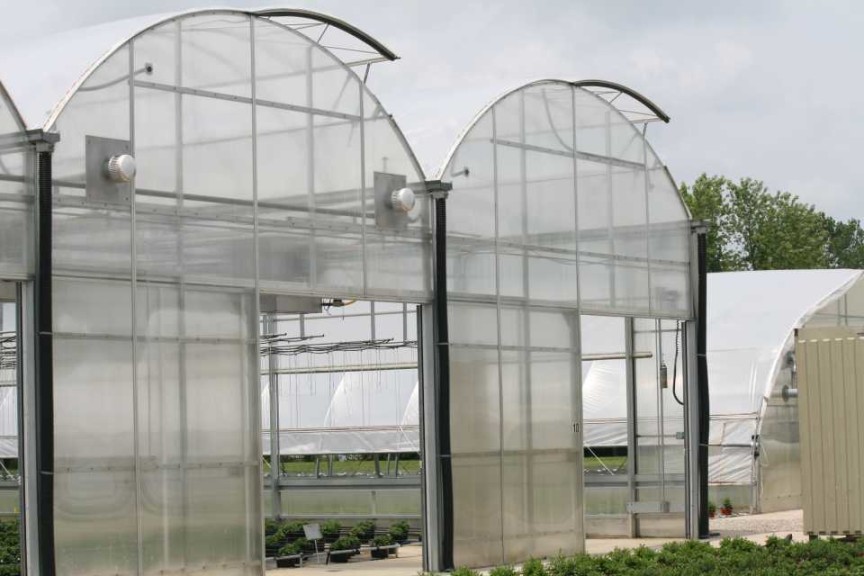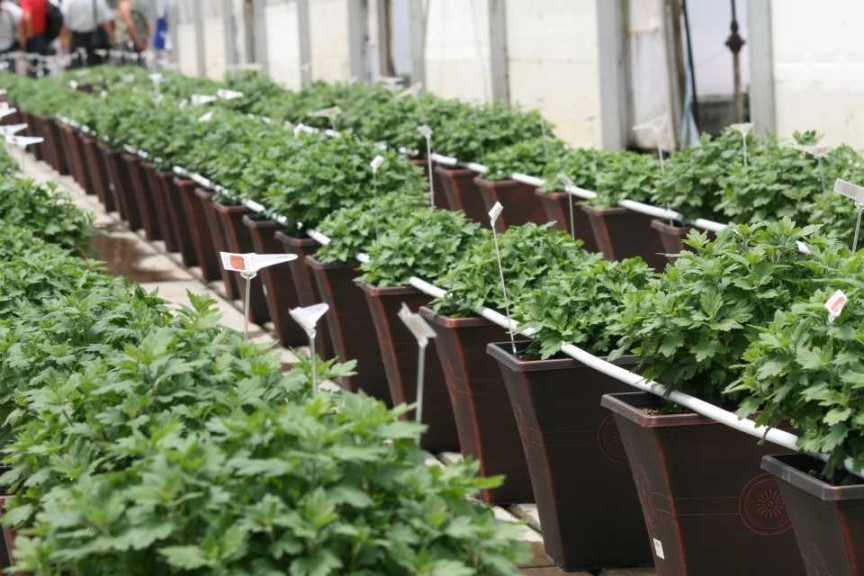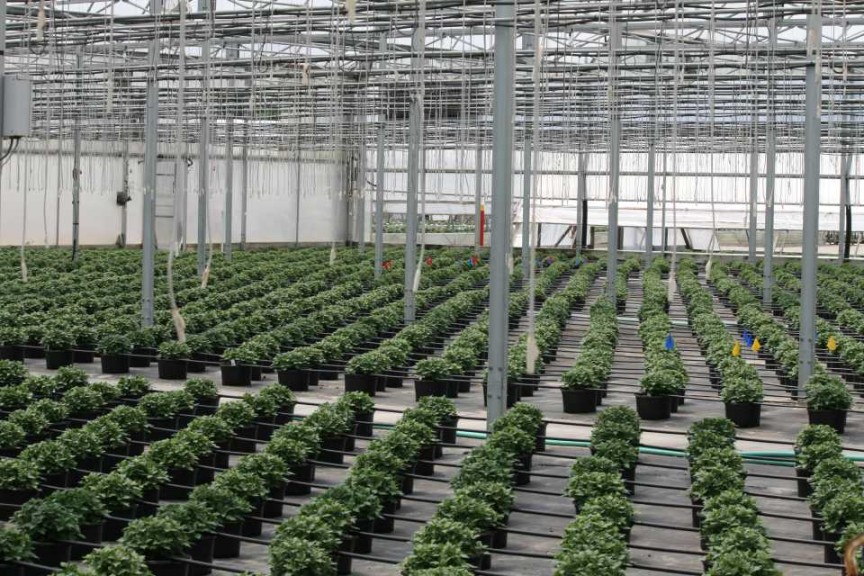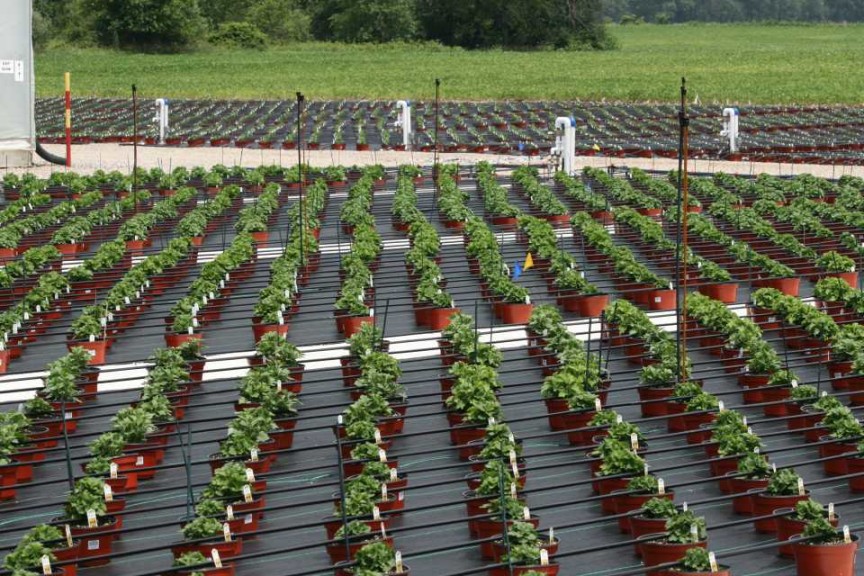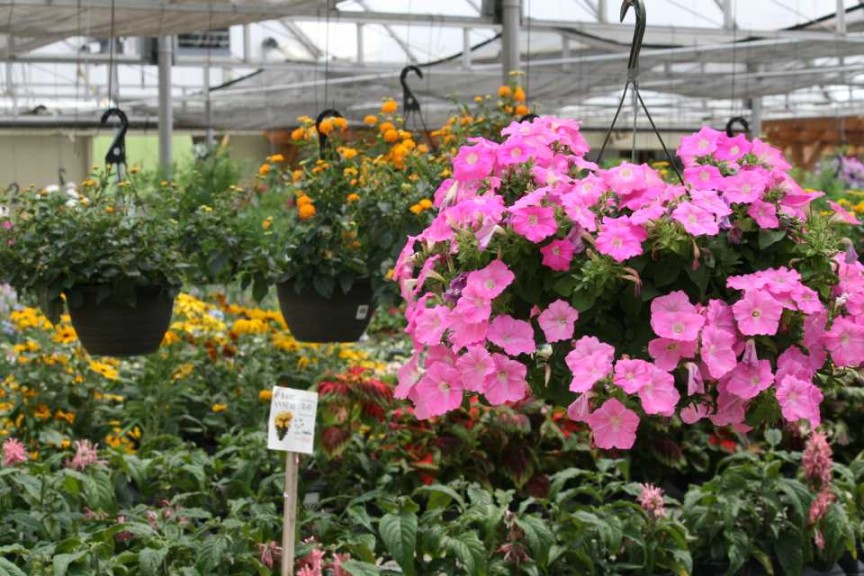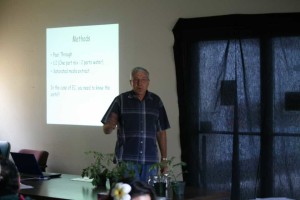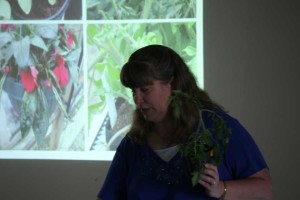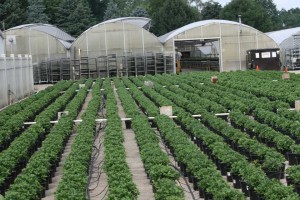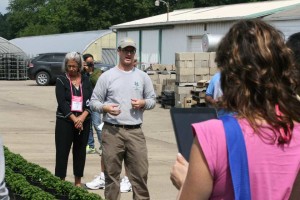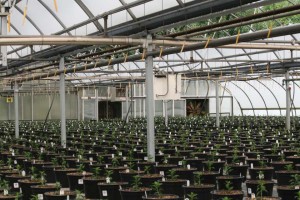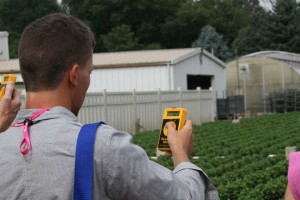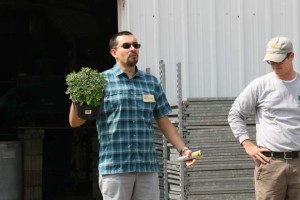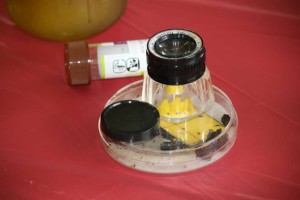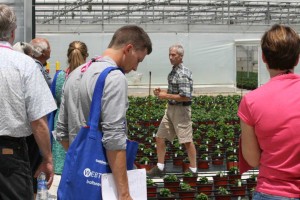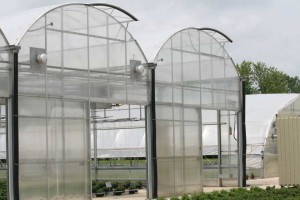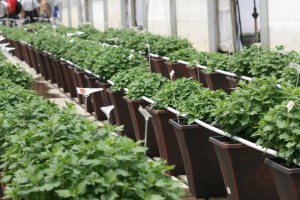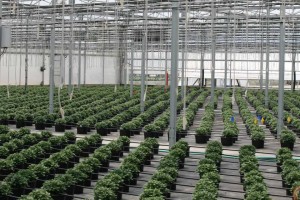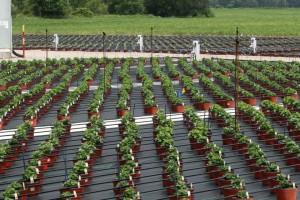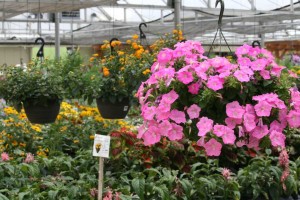Cultivate’15 Greenhouse Learning Tour Showcases Growers Who Have Changed The Game
Growers took advantage of the Greenhouse Learning tour held Saturday, July 11 at Cultivate’15 to see the strategies and technology that two successful growing operations are using to tackle production challenges and come out ahead of the game.
Tour stops included Stockslagers Greenhouse & Garden Center in New Lebanon, Ohio, and Berns Garden Center & Landscaping in Middletown, Ohio. At each stop, academics from The Ohio State University and Purdue University gave presentations on production techniques.
[blackoutgallery id=”74657″]Stockslagers Greenhouse And Garden Center: A Part-Time Hobby Transitioned To Full-Time Business
In 1959, Ray and Joyce Stockslager used a small, glass greenhouse for their part-time hobby of growing flowers and veggies for locals. Today, the operation is a full-time greenhouse with six acres under cover, one acre of field production and a retail garden center. The company employs 20 full-time workers and reaches 45 to 50 workers during its peak season. It is unique in that many of its seasonal workers are schoolteachers and school Moms that have worked for the company for several years.
When the Stockslager’s two sons Duke and Scott came on board in 1980, they transitioned the operation from seasonal bedding plants to a year-round greenhouse and now grow spring annuals, fall garden mums, poinsettias, herbs, vegetables and a few perennials. The Stockslager’s grandson, Jacob (the third generation), joined the business in 2006.
Spring sales at Stockslagers are split evenly between wholesale orders and retail, while fall and Christmas crops are about 80 percent wholesale and 20 percent retail. The company dedicates one-third of its production space to grow pre-ordered plants, such as bedding trays geared especially toward landscapers specific needs. Another source of revenue is its 20- to 30-inch custom containers that are grown for municipalities and commercial properties. The custom container business started with one account and quickly grew to more than 400 containers that supply cities, landscapers and private businesses.
Berns Garden Center & Landscaping: An Eight-Week Spring Business Turned 360 Days A Year
Al and Cherie Berns founded Berns Garden Center & Landscaping in 1956. Today, the operation includes two greenhouse locations with more than 120,000 square feet of growing space and two retail locations. The main retail store has 10,000 square feet of retail space, a greenhouse with 12,000 square feet of plant display and 22,000 square feet of outside covered shopping area.
The business originally operated only eight weeks during the spring season. It now operates four divisions year round — Berns Garden Center, Berns Landscaping, Berns Production Greenhouses and Berns Production Nursery — and employs 50 to 135 workers seasonally. Berns Landscaping, which includes employees trained in both horticultural and construction procedures, has won numerous awards for its work. Berns Production Greenhouses grows a broad selection of annuals, perennials and other hard-to-find plants.
The Ohio State University And Purdue University Academics Talk Lighting, Diseases, Biocontrols And More
Five academic specialists rounded out the tour with various presentations aimed at helping growers improve production techniques and combat pests and diseases.
At Stockslagers, Francesca Peduto-Hand of The Ohio State University (OSU) covered ornamental diseases caused by oomycetes, saying that control of oomycetes like downy mildew and phythium is achieved by a combination of environmental manipulation, good scouting and preventive fungicide applications. Luis Canas, also of OSU, followed up with a talk on biocontrols, where tour participants where given the chance to examine examine pest damage on leaves and see biocontrol products firsthand.
Claudio Pasian of OSU led off the presentations at Berns by talking about scouting for pH and EC (electrical conductivity). His take-home messages: be proactive about scouting, and test, don’t guess. He said that when it comes to scouting, owners or head growers need to take more of the responsibility and that “the urgent has to be done before the important.”
Michelle Jones of OSU discussed ethylene damage in the greenhouse, showing growers examples of plants with ethylene damage and talking about what symptoms to watch for in plant material. She said it is important for growers to know which plants are sensitive to ethylene because the symptoms often look similar to nutrient deficiencies. She also talked about various sources of ethylene like gas-powered engines and propane-powered water heaters and equipment. She emphasized the importance of proper ventilation and correct placement of greenhouse stacks.
Roberto Lopez of Purdue University accompanied growers around Bern’s greenhouses and gave them the chance to test light levels with meters while he discussed the effects of lighting on on plant growth and plant quality.




